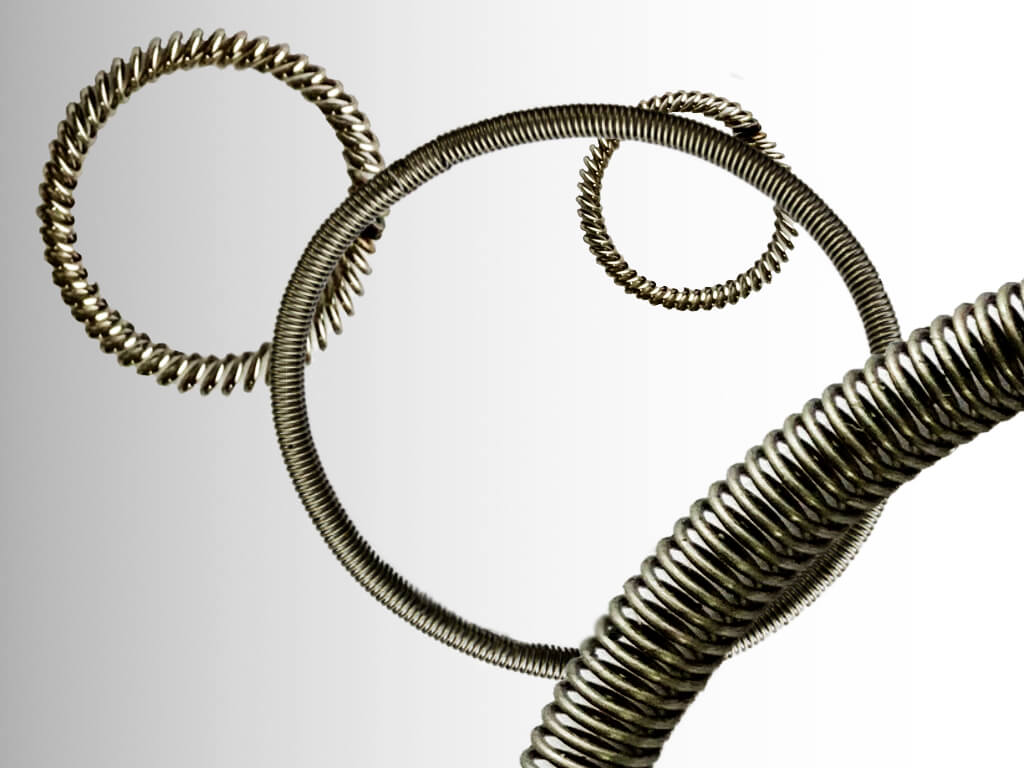
There are several distinct benefits to be had from using canted coil springs in place of more traditional springs. Because of this, it should come as no surprise that these springs are used extensively in medical applications.
Canted Coil Springs Are Effective Electrical Connectors and Contacts
Canted coil springs are being used more and more for electrical contacts and connectors. Canted coil connectors make it easier to replace leads and lead segments without harming the patient, and lead interface solutions based on canted coil springs can significantly reduce risk to the patient. In some applications, the procedure time and the patient’s recovery time can be reduced through the wise application of canted coil springs. Canted coil springs also provide high contact power density with a minimal amount of temperature rise. In many instances, they can also reduce the size of the medical device and provide multi-channel connections.
Canted Coil Springs Can Provide EMI and RF Shielding
Another benefit of canted coil springs is their ability to provide shielding from harmful EMI and RFI interference in applications such as ultrasound equipment and vital signs monitors. Many times the medical data being transmitted cannot afford a compromise in its integrity of the disruption of the data flow. Canted coil springs can actually be tuned to meet specific impedance specifications so that medical equipment and devices can be protected from dangerous crosstalk interference.
Canted Coil Springs Can Be Used in Spring-Energized Seals
Canted coil springs can be used in spring-energized seals in medical equipment and external devices as well as implantable devices. Spring-energized seals are often used to maintain a seal when there are problems with hardware gaps, runout, eccentric contact surfaces, and vacuum pressures. In short, spring-energized seals can provide an effective seal where other seals would fail, and when canted coil springs are used then a far more consistent spring force can be applied.
Canted Coil Springs Serve as Reliable Mechanical Connectors
Canted coil springs can provide a reliable connector in three specific ways:
- Holding and retaining two parts in alignment with customized forces, often used for surgical instrumentation
- Securely fastening two parts together while allowing them to still be unlatched (where the latching force can be customized), which is also being used with surgical instrumentation
- Permanently locking two parts together, including use during orthopedic implant surgery
Unlike most mechanical connector solutions, canted coil springs can achieve these connections with strength, reliability, and incredibly high precision. In addition, when canted coil springs are used as mechanical connectors, there is an option to customize the forces for insertion and breakaway.
Medical Applications of Canted Coil Springs
There are a host of specific medical applications where canted coil springs have proven invaluable. The following is just a sampling:
- Cochlear implants
- Implantable medication pumps
- Insulin delivery systems
- Orthopedic instruments
- High-speed surgical power tools
- Neurostimulators
- Ultrasound equipment
- Pain management devices
- Vital signs monitors
- Hemodialysis equipment
- Defibrillators
- Cardiac rhythm management devices
Conclusion
Canted coil springs are used in connection with everything from neurostimulators to orthopedic implant surgery. Their ability to serve as electrical connectors/contacts, shield from EMI and RF interferences, serve as the energizer in spring-energized seals, and provide tailored mechanical connections make them ideal solutions for many different medical devices and implantables.

